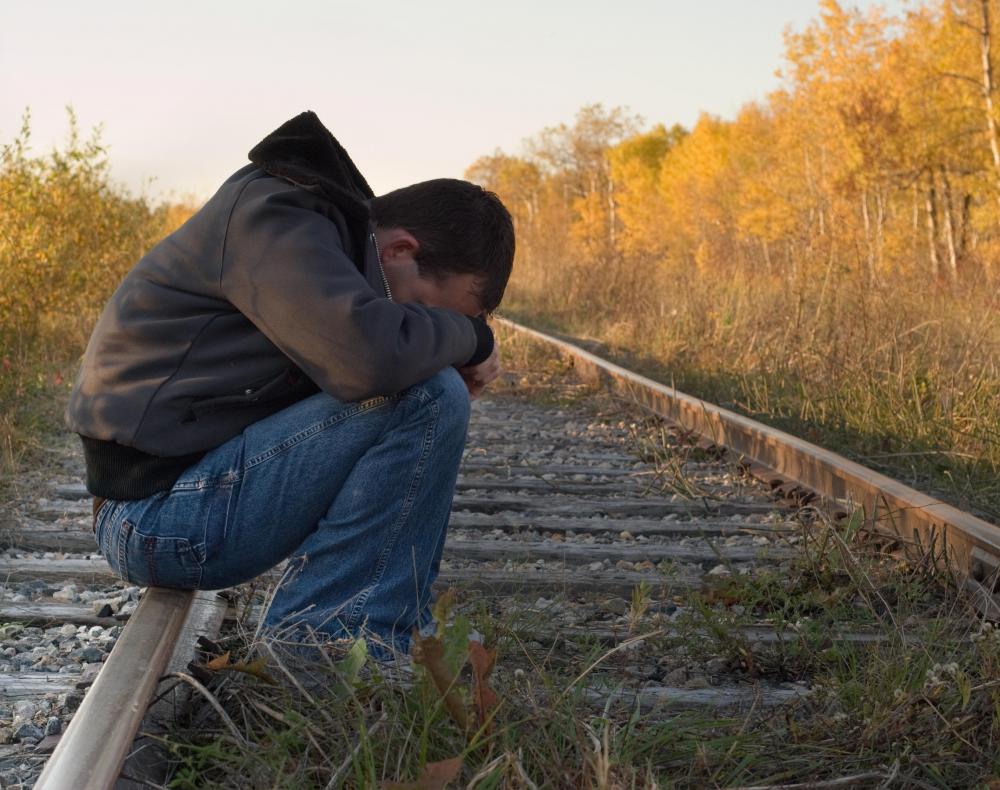At TheHealthBoard, we're committed to delivering accurate, trustworthy information. Our expert-authored content is rigorously fact-checked and sourced from credible authorities. Discover how we uphold the highest standards in providing you with reliable knowledge.
What Is the SAD PERSONS Scale?
The SAD PERSONS scale is a tool used to evaluate the risk of patients who may be suicidal. The name is a mnemonic to help practitioners remember each risk factor. One point is assigned for each risk factor present, and there are guidelines on what to do with a patient scoring in each score range. The original scale is for adults, but the scale was later revised to include criteria for children.
In the adult scale, the first S represents sex or gender, A stands for age, and D represents depression. The P indicates a previous suicide attempt, E stands for the use of ethanol (alcohol) or other drugs, while R stands for a loss in a patient's rational thinking. The second S indicates a lack of social support, O stands for organized plan, N indicates the patient has no spouse, and the final S represents a chronic or debilitating sickness.

Men are more likely to go through with suicide plans than females, so they are given one point for sex, while females get zero. People who are younger than 20 or older than 75 are at higher risk. Those who have an organized, detailed plan for committing suicide are considered much more likely to follow through.
The scale for children is quite similar, with two exceptions. N stands for negligent parenting, and the final S indicates the presence of school problems. For both scales, patients scoring zero to two points are sent home and told to follow up with a mental health professional at a later date. A score of three to four necessitates close follow up and possible hospitalization, and those with scores of five to six should seriously consider hospitalization. Those scoring seven or higher should be hospitalized or committed to a mental health facility.

In an evaluation done by the Academy of Psychosomatic Medicine, medical students using the SAD PERSONS scale showed a greater ability to determine the risk of suicidal patients. The control group, who did not use the SAD PERSONS scale, rated both the high- and low-risk patients as being high risk. This could lead to hospitalizations in cases where it is not truly needed.

The SAD PERSONS scale was developed in 1983, and was updated in 1996 to include children. A common place to use the SAD PERSONS scale is in the emergency room. If a patient comes in claiming to be suicidal, or having possibly attempted suicide, a quick and easy determination of the severity of the situation is often very helpful.
AS FEATURED ON:
AS FEATURED ON:















Discussion Comments
@fBoyle-- I saw a scientific study about the reliability of the SAD PERSONS scale recently and the result was that it is not very reliable when it comes to assessing those who have self-harmed. So you are right. This scale is helpful, but it should not be the only tool used to determine whether someone is suicidal.
Why would someone who is hospitalized for attempted suicide receive a low SAD PERSONS score and be sent home?
My niece was hospitalized after a suicide attempt recently. She was in the hospital overnight because she took medications. She was evaluated using SAD PERSONS but received a low score. The parents were told that they can follow up with a mental health professional if they want. But they were not required to and consequently, my niece has not seen a psychiatrist or psychologist.
I don't think someone who has just tried to kill themselves should be sent home without any follow up like this. This experience makes me think that the SAD PERSONS scale is not reliable.
I was evaluated with this scale when I went to the counseling services at college due to depression. I think they evaluated me with this scale because I mentioned a previous suicide attempt. Otherwise, there are other scales and tests that are usually used to evaluate levels of depression and anxiety. I don't think this scale is used for everyone, especially if they don't seem very depressed or likely to harm themselves.
Post your comments